Kimber Pepper Blasters
Oleg Volk 02.24.14

Pepper spray has long been a popular less lethal defensive tool for many Americans. In some jurisdictions, it’s the only legal carry option. Compared to a firearm, it can be used with less restraint to deal with problems such as aggressive dogs. However, pepper spray in aerosol cans has serious limitations. The main problem is the sensitivity of the propellant to temperature: cans have been known to leak if left in a hot vehicle or when the seals become brittle with age. In very cold areas, the propellant thickens and gels, greatly reducing the effective range.
Kimber Pepper Blaster replaces aerosol propulsion with a two-shot disposable pyrotechnic launcher. Not being reloadable, the pepper projector isn’t classified as a firearms and can be treated the same way spray cans are. Maximum effective range is listed as 13 feet or just under 4 meters.
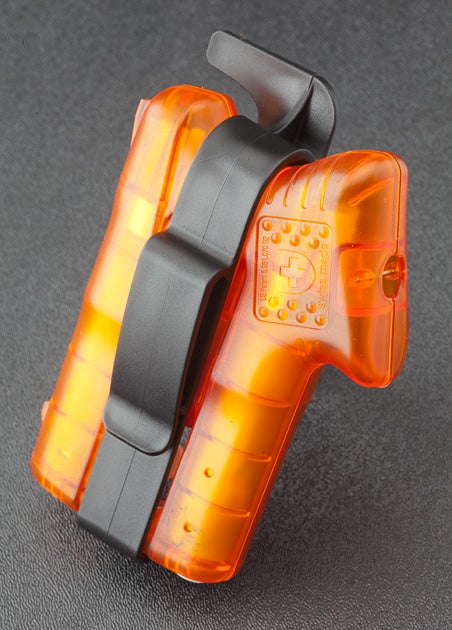
To launch the pepper charge, the user would push the white safety sideways with either hand and pull the trigger. Pulling the trigger again fires the second charge, after which the unit may be thrown away or retained as a souvenir of the encounter — but with care, as minute residue of the pepper will remain on the nozzles.
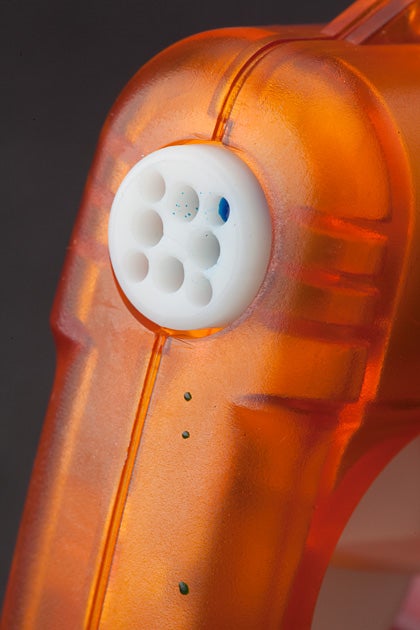
Each Pepper Blaster comes in a sturdy tin with instructions on use.
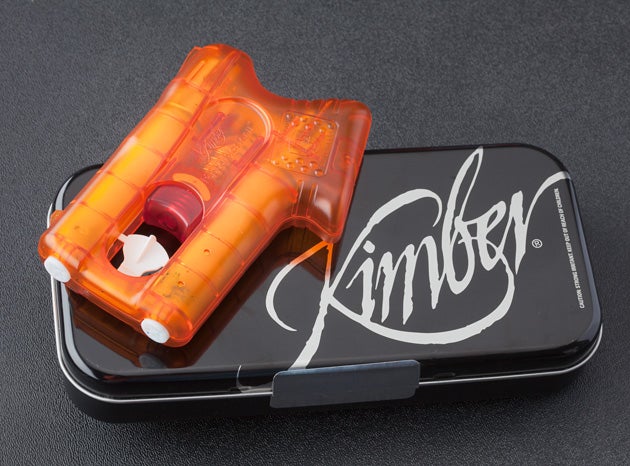
We took a test unit out for a field test on a day with heavy rain and high winds. With conventional pepper spray, the user ran a very high probability of contaminating himself as much or more than the opponent. If Pepper Blaster would work under these unfavorable conditions, it might be worth the $35 retail price.

One-handed hold is entirely reasonable with PBII as it has no perceptible recoil. The report is minimal, too — less loud than a BB gun.
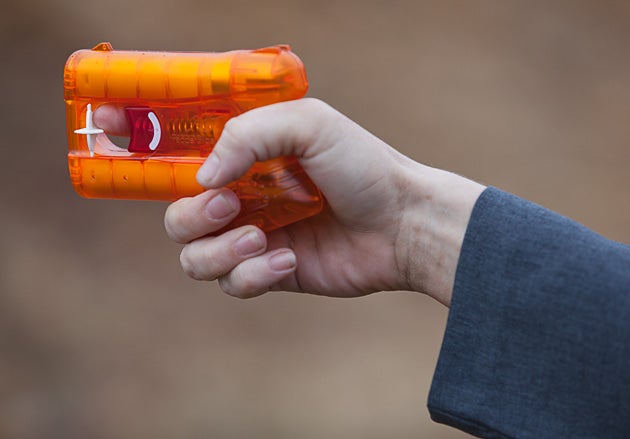
Pepper Blaster II has simple notch and post sights, while the original model (also marketed as the Guardian) does not. Model II is slightly larger, but the improvement in hit probability is probably worth the slight increase in height. The spray pattern is not very wide and it’s quite possible to miss the face, especially if shooting at a moving foe.
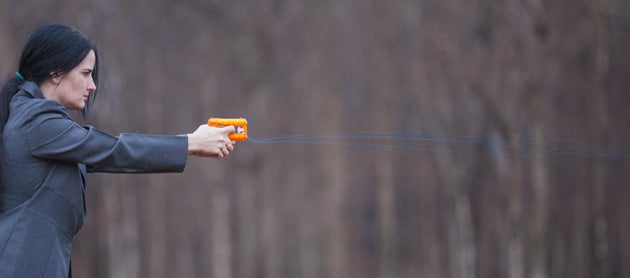
Some of the trajectory variation is due to the strong wind. The shot was made from about nine feet with aim at the center of the sternum. The result, a perfect — and utterly useless — heart hit.

This is where the difference between lead and pepper is important. A heart shot with a pistol would be a pretty good fight-stopper–not instant but close to it. Pepper, on the other hand, would have to make its way into the eyes, the mouth or the nose of the foe to be truly effective. Videos of Pepper Blaster in use also show a delay of one to three seconds before the person hit becomes fully affected.

Starting at about 160fps, the lightweight pepper suspension slows down fairly quickly. It does fly far more true than any of the aerosol-propelled alternatives and thus avoids one of the main perils of pepper spray use: the accidental self-contamination. Compared to a continuous stream, it offers less of an opportunity to correct aim by observation, so practicing a training unit prior to carrying the real thing is highly recommended.
The red Pepper Blaster II in particular does not look like a firearm, so it’s more likely to pass for a pager or some other electronic accessory if accidentally exposed in a restrictive environment. Unlike guns, it’s legal for carry by younger people, who also happen to be at greater risk of criminal victimization. Some jurisdictions, notably the Soviet state of New York, do restrict or prohibit pepper spray and this device as well. Check your local laws and regulations.
For people who carry firearms, this is a good intermediate force level option that leverages the same skills as shooting a pistol. For those who do not, it’s a great improvement over an empty hand and an uncomfortable smile. A lot of Pepper Blasters are bought as gifts for college-bound youngsters and I can see why!